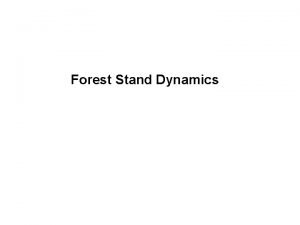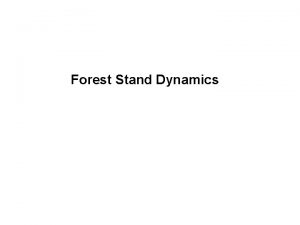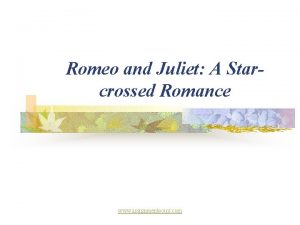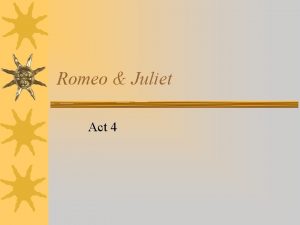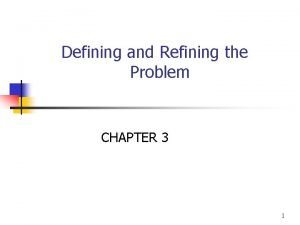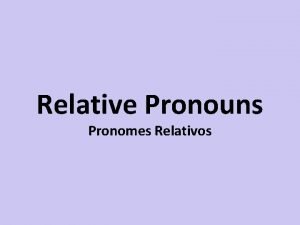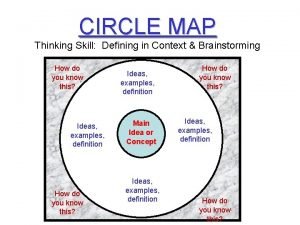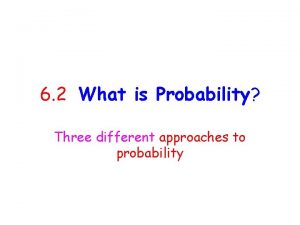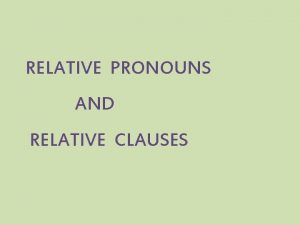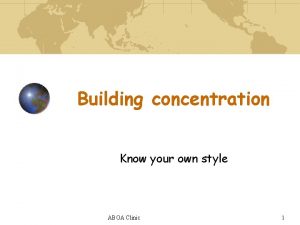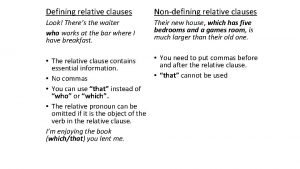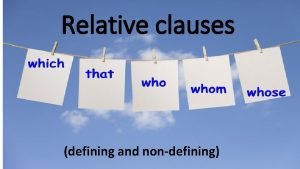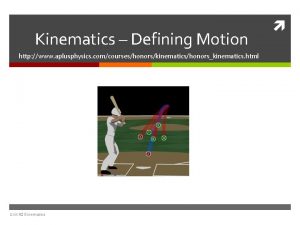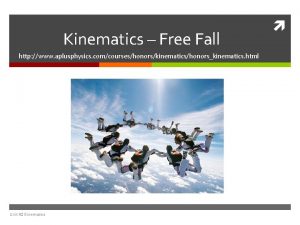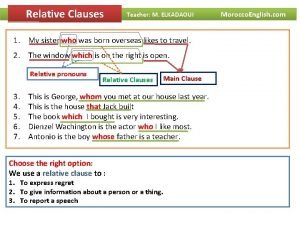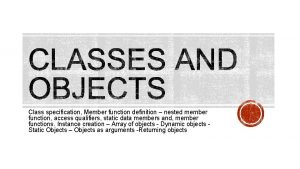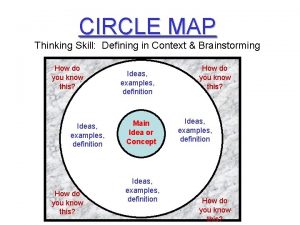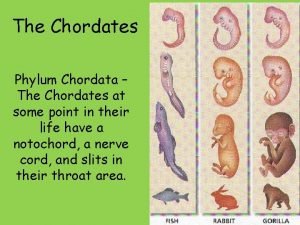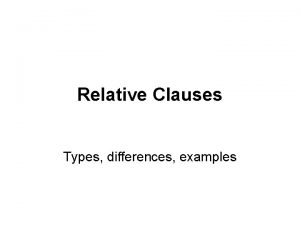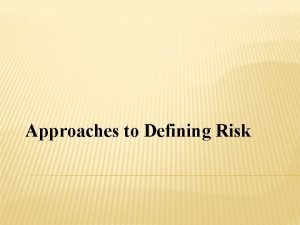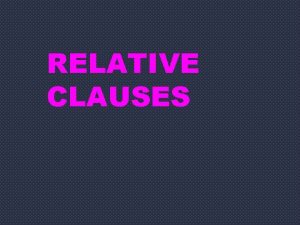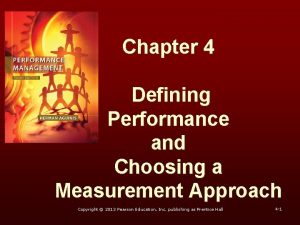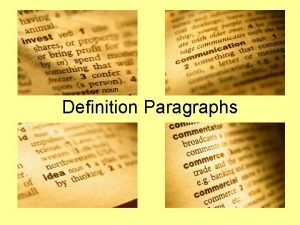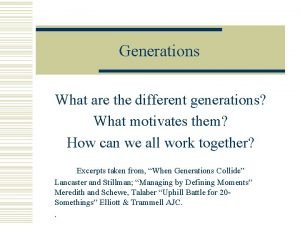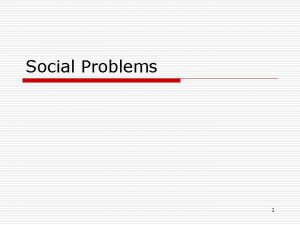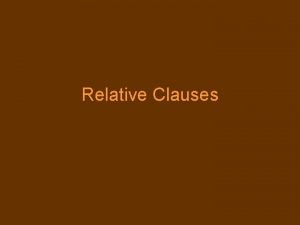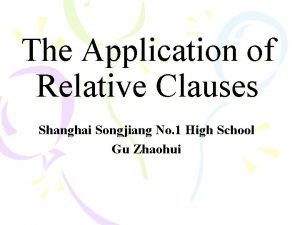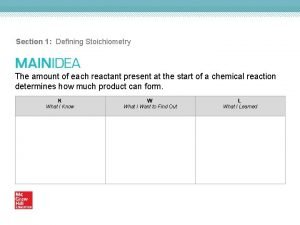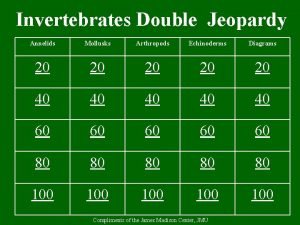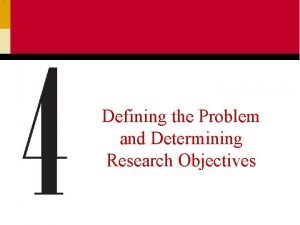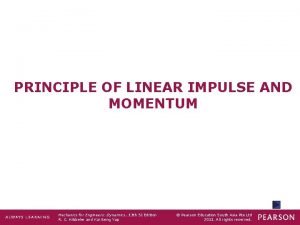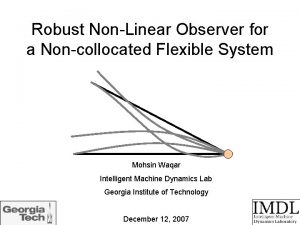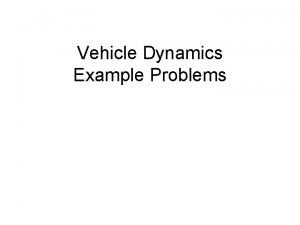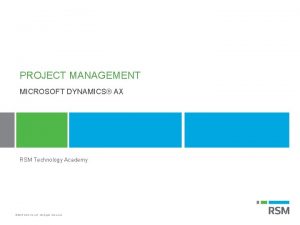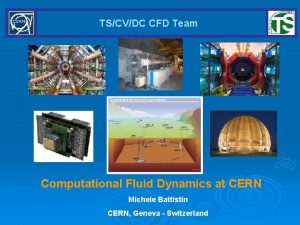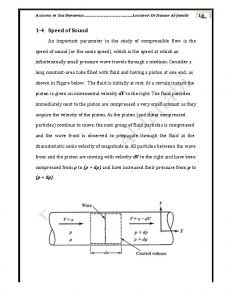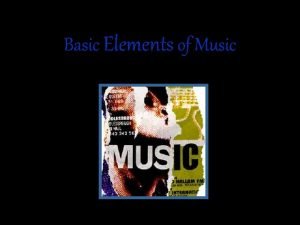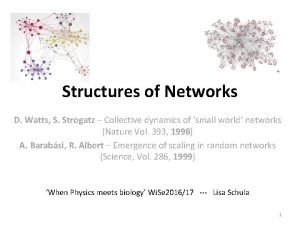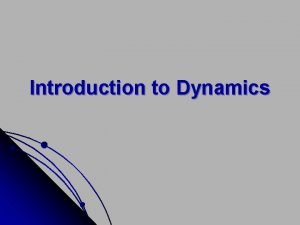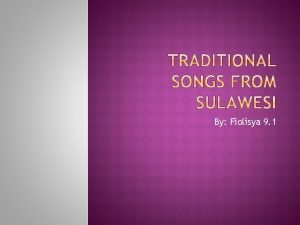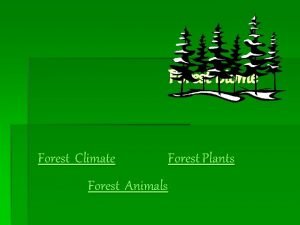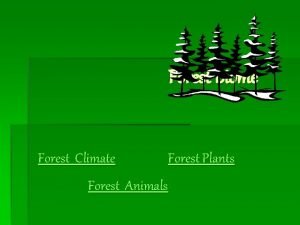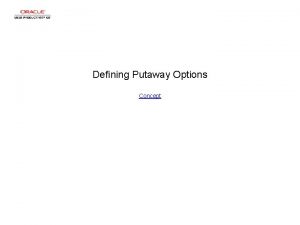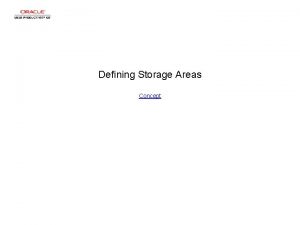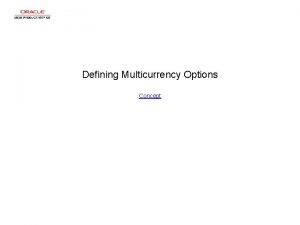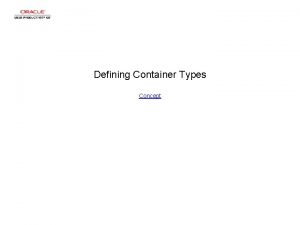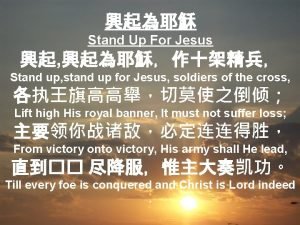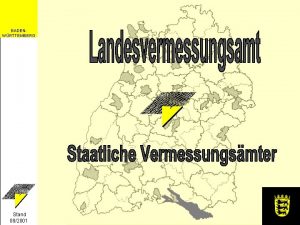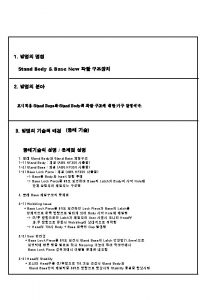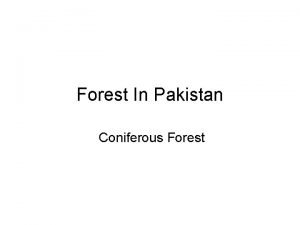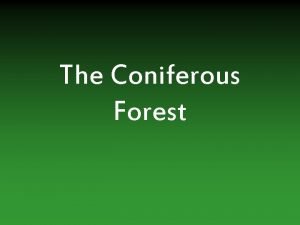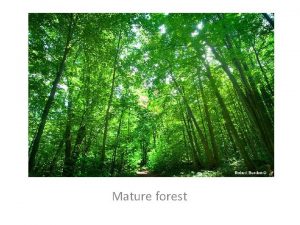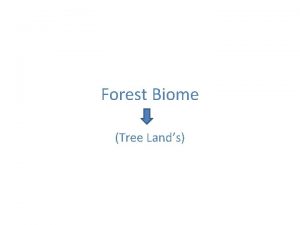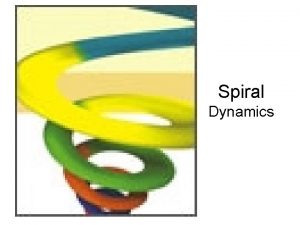Forest Stand Dynamics Defining Forest Stand Dynamics Forest











































































































- Slides: 107

Forest Stand Dynamics

Defining Forest Stand Dynamics • Forest dynamics describes the underlying physical and biological forces that shape and change a forest – – Continuous state of change altering forest composition and structure Basic elements of forest dynamics: • Disturbance • Succession

Disturbance and Succession • Forest disturbance is an event that causes change in forest structure and composition, resource availability, and the physical environment • Succession is the process that gradual replacement of one community of plants by another

Disturbance and Succession

Disturbance and Succession

Disturbance and Succession

Range of Forest Disturbance • Forest disturbances vary in type, frequency, spatial scale, and severity • Disturbance types: Fire, wind, insects, disease, flood, ice storms, grazing/herbivory, timber harvest, road construction, conversion to nonforest • A continuum of disturbance from individual tree-level to landscape scale

Major (Stand-Replacing) Disturbance

Major (Stand-Replacing) Disturbance

Phases of Stand Development Following Major (Stand-Replacing) Disturbance 1. 2. 3. 4. • Stand initiation (reorganization phase) Stem exclusion (aggradation phase) Understory reinitiation (transition phase) Old-growth (complex phase, steady-state) Each phase of stand development is accompanied by changes in stand structure and species composition.

Stand Initiation Stage • Follows major disturbance (wind, fire, clearcuts) • Regeneration from seed, sprouts, or advance reproduction • Rapid increase in the number of stems and biomass • • Structure – Single cohort (“even-aged”) stand – “Brushy” stage with herbaceous, shrub, small trees – Invasion continues until all growing space is occupied Stage ends when canopy becomes continuous and trees begin to compete with each other for light and canopy space

Stem Exclusion Stage • Begins at about crown closure, characterized by onset of density dependent mortality (“self-thinning”) – Canopy continues to have one cohort and canopy too density to allow new trees to grow into canopy – Crown differentiation occurs • Biggest trees tend to get bigger, the smaller ones tend to die • Mortality rates are high, especially in intermediate and overtopped crown classes • Least competitive individuals die – Crowns are small enough so that when a tree dies, others fill the vacant growing space by expanding their crowns • Phase ends when biomass peaks

Crown Classification Overtopped http: //www. extension. umn. edu/distribution/naturalresources/images/3473 -12. jpg

Crown Classification • Dominant: Crown is larger than average and typically above the general upper level of the canopy; receives full top light, considerable side light • Codominant: Top of crown is at upper canopy height; receives full top light, little from sides; medium-sized crown, usually somewhat crowded on its sides. Often wide range around “average canopy” tree. • Intermediate: Top of crown is below the top of the general canopy; receives some top light from directly above, none from the side; conspicuously narrower, smaller and shorter than the average crown. • Overtopped: Crown entirely below some foliage of the upper canopy; receives no direct top light; small, weak crown with low vigor

Understory Reinitiation Stage • • • Mortality of individuals cannot be closed by adjacent individuals – Crowns of trees are now large enough so that when one overstory tree dies, the surrounding trees can not fill the gap Permanent canopy gaps form Permanent understory forms – Tree reproduction becomes re-established beneath parent stand – Primary factors influencing species composition • Understory light availability • Species degree of shade tolerance

Old-Growth (or Complex) Stage • Natural mortality of large overstory trees produces irregular canopy gaps • Mortality and recruitment and are in balance and biomass is stable • Can mark transition from an even-aged to an uneven-aged stand

Stand Initiation Stem Exclusion Understory Reinitiation Old growth (Complex Stage)

Johnson, P. S. , S. R. Shifley, and R. Rogers. 2002. The Ecology and Silviculture of Oaks. CABI Publishing, New York, NY. 503 p. Stand Development in the Central Hardwood Region Stand Initiation Phase: 10 – 20 years

Johnson, P. S. , S. R. Shifley, and R. Rogers. 2002. The Ecology and Silviculture of Oaks. CABI Publishing, New York, NY. 503 p. Stand Development in the Central Hardwood Region Stem Exclusion: • Begins after 10 years • Concludes before age 70

Johnson, P. S. , S. R. Shifley, and R. Rogers. 2002. The Ecology and Silviculture of Oaks. CABI Publishing, New York, NY. 503 p. Stand Development in the Central Hardwood Region Understory Reinitation: • Tree reproduction begins to develop under maturing overstory • Begins after age 50, concludes before age 120

Johnson, P. S. , S. R. Shifley, and R. Rogers. 2002. The Ecology and Silviculture of Oaks. CABI Publishing, New York, NY. 503 p. Stand Development in the Central Hardwood Region Complex Stage (old-growth): • Oak forest typically require 100 years or longer to reach this stage.

Johnson, P. S. , S. R. Shifley, and R. Rogers. 2002. The Ecology and Silviculture of Oaks. CABI Publishing, New York, NY. 503 p. Stand Development in the Central Hardwood Region *Assume no significant stand-scale disturbances occur *Actual durations of stages of development vary with species composition, site productivity, and other factors

Tree Growth and the Environment

Photosynthesis • Photosynthesis: Conversion of light energy to chemical energy – Production of carbohydrates from CO 2 and H 2 O in the presence of chlorophyll using light energy. light 6 CO 2 + 12 H 2 O C 6 H 12 O 6 + 6 O 2 + 6 H 2 O chlorophyll – Photosynthetic activity is a major factor in the production of biomass and carbon sequestration – Rates of photosynthesis are influenced by both plant and environmental factors


Respiration • Respiration is the process by which energy fixed by photosynthesis is made available for metabolic processes

Environmental Factors Influencing Photosynthesis • • • Light Temperature CO 2 concentration Water availability Nutrient availablity

Environmental Factors Influencing Photosynthesis • Light – Photosynthesis uses solar radiation in the visible spectrum (400700 nm wavelengths) • Wavelength range known as photosynthetically active radiation (PAR) – Light directly affects tree growth by its intensity, quality, and duration

Environmental Factors Influencing Photosynthesis • Light – Light environment in a stand is influence by the vertical and horizontal forest structure • Density and vertical distribution of foliage alters light transmittance from sky to forest floor • Silviculturists manipulate light environment in stands by altering forest structure

Inverse Relationship between Canopy Openness and Light Availability

Light and Photosynthesis Below some light, carbon uptake is negative, as respiration exceeds photosynthesis

Light and Photosynthesis As light increases, a light compensation point is eventually reached where CO 2 through photosynthesis is exactly balanced by losses through respiration

Above the light compensation point, photosynthesis increases until the amount of CO 2 available to the leaf or processes and enzymes associated with the dark reactions limits photosynthesis. • Plateau in the rate of photosynthesis is know as light saturation point

Light and Photosynthesis • Light compensation points and light saturation levels vary: – – Among species Among individuals of the same species Among leaves on the same tree With changing environmental conditions

Environmental Factors Influencing Photosynthesis • Temperature – Temperature is a very important factor in photosynthesis but unlikely to become a limiting factor in forests of temperate regions except during the winter

Environmental Factors Influencing Photosynthesis • CO 2 concentration – CO 2 concentration in the atmosphere is low, about 0. 03% by volume – Concentrations in the forest are often higher but show vertical gradients which change diurnally and seasonally – Stands whose structure permits continued circulation of air provide more favorable conditions from the standpoint of CO 2 supply than those with a tight canopy or those which are multistoried. – CO 2 enrichment (i. e. atmospheric rise due to fossil fuel burning) has been shown to increase growth rates

Environmental Factors Influencing Photosynthesis • Water availability – Only minute quantities of water are consumed in the process of photosynthesis – The main effect of water on photosynthesis is indirect through hydration of protoplasma and stomatal closure

Environmental Factors Influencing Photosynthesis • Water availability – Issues with moisture availability for photosynthesis and hydration: • Water stress in temperate regions occurs on xeric to intermediate quality sites and due to seasonal drought • Water is a primary growth limiter in arid and semi-arid regions – Wider spacing is one way for the silviculturists to reduce the impact of low moisture supply in such regions arid and semiarid regions (U. S. southwest and mountain west)

Environmental Factors Influencing Photosynthesis • Water availability – Moisture availability is dictated by • Soil properties – Soil texture – Soil profile and depth • Topography – – Aspect Slope position Slope shape Elevation

Environmental Factors Influencing Photosynthesis • Water availability and topography – Aspect • Solar radiation exposure strongly effects evapotranspiration – North, northeast, and east slopes more cool and moist – West, southwest, and south slopes have highest transpiration loss due to perpendicular orientation to incoming solar radiation – Slope position • Upper slopes drier • Middle to lower slope positions more moist and productive – Slope shape • Convex landforms shed water • Concave accumulate water

Environmental Factors Influencing Photosynthesis • Nutrients – Photosynthetic efficiency of foliage depends decisively on soil nutrient supplies – With improving nutrient status among sites photosynthetic capacity of trees also improve – The effect is both direct (i. e. , quantity of CO 2 fixed by gram of foliage) and indirect by increasing size of individual leaves, total size of crown and root system – Nutrient availability is dictated by a site’s soil properties • Exception is the use of fertilization

Plant Factors Influencing Photosynthesis • • Leaf age Position within crown Crown class and species Sun and shade adaptations

Plant Factors Influencing Photosynthesis • Leaf age – In conifers fully expanded one-year-old foliage is the most efficient of all age classes – Difference between age classes is mainly a consequence of varying rates of respiration, and by insect or disease damage

Plant Factors Influencing Photosynthesis • Position within crown – The most productive leaves are in the upper crown. The lowest whorls contribute little to net photosynthesis.

Plant Factors Influencing Photosynthesis • Crown class and species – Differences in photosynthetic efficiency between dominant, codominant, intermediate, and overtopped trees are relatively minor when one compares similarly exposed foliage and expresses efficiency per unit of leaf surface – The major factor causing differences in photosynthetic capacity of trees of different crown classes and of different species is the enormous difference found in leaf area.

Plant Factors Influencing Photosynthesis • Sun and shade adaptations – Not all tree species possess the same photosynthetic efficiency – Photosynthetic rates and efficiency also varies with species shade tolerance • Shade tolerant, intermediate tolerance, and intolerant – Photosynthetic efficiency varies between shade and sun leaves on the same tree • Shade leaves and shade-tolerant species have higher photosynthetic efficiency per unit of leaf area under low light conditions than sun leaves • Under high light conditions the reverse is true

The Carbon Budget of Trees Carbon budget of a tree (or any plant) can be expressed like a bank balance: Income = carbohydrates manufactured in photosynthesis Expenditures = carbohydrates used in growth and maintenance (construction and maintenance respiration) Balance = carbohydrates stored (so-called nonstructural carbohydrates and other compounds)

Individual Tree Growth • Amount of carbohydrates produced through photosynthesis by a given tree is influence by: – Resources available to the tree (i. e. , growing space) – Ability to harvest light and the roots ability to supply the foliage • Extent to which a tree increases mechanical support (i. e. , stem diameter) depends upon: – Carbohydrates remaining after supplying essential functions

Shade Tolerance • Shade tolerance – Definition: Having the capacity to compete for survival under shaded conditions • Understanding of shade tolerance is a cornerstone of silviculture • Critical to silviculture in the following ways: – Regeneration of desired tree species – Regulating forest growth and understanding plant succession – Influencing species composition

Shade Tolerance and Photosynthesis • Shade tolerant species – Species adapted to growing at reduced light intensities – Generally have lower compensation points and levels of light saturation than shade intolerant species • Shade intolerant species saturate at relatively high light levels – Yield increased carbon gain in high light environments

Shade Tolerant vs. Intolerant Trees • Regeneration – Tolerant : Regenerate and form understories beneath canopies of less tolerant trees or even beneath their own shade. • Example: Red maple under oak dominated overstory – Intolerant: Regenerate most successfully in the open or in canopy gaps

Shade Tolerant vs. Intolerant Trees • Ability to Persist in the Understory – Tolerant: Able to establish and persist in shaded understory – Intolerant: Sometimes establish in shaded understory, but they cannot survive for extended periods without increased understory light availability Remember: All this is relative! It is a manner of degree

Shade Tolerant vs. Intolerant Trees • Response to Release – Tolerant trees: When released by canopy opening, they respond rapidly and maintain good growth • Examples: Red maple, eastern hemlock – Intolerant trees: • Normally die (or are significantly suppressed) following longperiods in dense shade • If they are released after a long-period in dense shade, they respond with sluggish growth – Even tolerant trees may have trouble following release if in the understory too long

Shade Tolerant vs. Intolerant Trees • Crown Characteristics – Tolerant trees: Have heavy crowns of several leaf layers, the innermost remaining functional in very low levels of light – Intolerant trees: Have thin, open crowns of well-lighted leaves.

Shade Tolerant vs. Intolerant Trees • Natural Pruning – Tolerant trees: clean their boles of side branches relatively slowly because the leaves remain alive in low light • Examples: eastern hemlock, sugar maple, American beech – Intolerant trees: Clean their trunks rapidly, "self-pruning", even if grown in the open • Examples: shortleaf pine, yellow-poplar

Shade Tolerant vs. Intolerant Trees • Bole Form – Tolerant trees: Because of differences in the degree of natural pruning, tolerant trees have more cone-shaped boles • Examples: American beech, sugar maple, hemlock – Intolerant trees: Tend to have cylindrical-shaped boles • Examples: poplars, southern pines

Shade Tolerant vs. Intolerant Trees • Seed Production – Tolerant trees: Reach seed bearing age late and may produce periodic seed crops – Intolerant trees: Produce seed early in live and produce large, regular seed crops

Adaptive Strategies in Reference to Tolerance • Intolerants – Capacity for rapid establishment on disturbed sites • Early seed production • Prolific seeders • Light seeds, wide dispersal • Rapid germination – Fast juvenile growth in full light – Adaptation to extreme sites – Colonize from a refuge site

Adaptive Strategies in Reference to Tolerance • Tolerant species – Typically adapted to sheltered, moist, fertile sites – Advance reproduction dependent – Gradually replace intolerants in the absence of disturbance A special case: gap-phase species • Tolerant when juvenile • Capable of outgrowing tolerant species when canopy gap created • Example: eastern white pine

Silvics in Central Hardwood Forest Region

Central Hardwood Forest Region

25. 4 million acre forestland base





Silvical Characteristics of KY Major Species Seed Dissmemination Gravity Animals Ecological Strategy Wind Exploitive Conservative Yellow-poplar X X White oak X X X Chestnut oak X X X Black oak X X X Northern red oak X X Scarlet oak X X Sugar maple X X X Red maple X X Pignut hickory X X X American beech X X X

Silvical Characteristics of KY Major Species Yellow-poplar White oak Chestnut oak Black oak Northern red oak Scarlet oak Sugar maple Red maple Pignut hickory American beech Shade Tolerance Growth Rate Intolerant Intermediate Tolerant Slow Medium Fast X X X X X X X X Longevity < 100 -200 >200 X X X X

Need More Information? Silvics of North America • Volume 1: Conifers • Volume 2: Hardwoods

Growth and Yield of Stands

The Stand • The basic unit for silvicultural practice • Stands are usually classified by age, composition, and structure

Growth • Growth is increase in size of an individual or a stand • Growth is usually expressed as a change in size per unit time and area

Mean Annual Growth • Mean Annual Increment (MAI): Average annual growth a stand has exhibited up to a specified age where, Ya = yield at given age a = age

MAI Calculations Example: – A stand was inventoried in 2013 – In 2013, the stand was 60 years old – Stand volume was 3200 ft 3 per acre in 2013 • Calculate MAI in year 2013:

Periodic Growth • Periodic Annual Increment (PAI): Average annual growth a stand exhibited during a specific time period where, Y is the yield at times 1 and 2 T 1 represents the year starting the growth period, and T 2 is the end year

PAI Calculations Example: – A stand was inventoried in 2003 and 2013 – In 2013, the stand was 60 years old – Stand volume was 2000 ft 3 per acre in 2003 and 3200 ft 3 per acre in 2013 • Calculate PAI:

Relationship between PAI and MAI Net Yield Periodic annual increment (PAI) and mean annual growth (MAI) rises, peaks, and declines through time

Relationship between PAI and MAI Net Yield Stage 1: Rotation for maximum fiber production ends when PAI = MAI

Relationship between PAI and MAI Net Yield Stage 2: Rotation for sawtimber production with exact length determined by economic criteria

Relationship between PAI and MAI Net Yield Stage 3: Understory reinitiation phase where mortality exceeds production and standing volume declines progressively

Yield • Yield is the quantity of harvestable material or attributes produced on a defined area of land • Yield is usually expressed as a rate, quantity per unit time and area • The most fundamental forest yield calculation relates solar energy input to crop output

Gross versus Net Yield • Gross yield – Total amount produced on a given site at a given age (e. g. , volume of living trees + volume of mortality) – Rises throughout stand development, but declines in complex phase • Net yield – Yield (volume or biomass) available for removal at any given age – Rises throughout much of a stand’s life, but gradually falls below gross yield as mortality accumulates

Growth Patterns of Even-Aged Stands • Tree Density – Decreases continuously due to mortality as the stand ages Schnur, G. L. 1937. Yield, stand, and volume tables for even-aged upland oak forests. US Department of Agriculture, Technical Bulletin No. 560. 87 p.

• Average Tree Diameter – Diameter (dbh) of average tree increases throughout the life of the stand as trees grow and as smaller trees suffer a disproportionately higher mortality rate Schnur, G. L. 1937. Yield, stand, and volume tables for even-aged upland oak forests. US Department of Agriculture, Technical Bulletin No. 560. 87 p.

• Basal Area – Basal area increase throughout the life of a stand. • In some species, basal area rises to a plateau and then remains fairly constant (growth balanced by mortality). Schnur, G. L. 1937. Yield, stand, and volume tables for even-aged upland oak forests. US Department of Agriculture, Technical Bulletin No. 560. 87 p.

• Tree Height – Height of dominant and codominant trees increases through life of stand – Normally level off or flatten as stands become decadent

Site • Site is the sum of the effective environmental conditions under which a forest lives • Site factors can be grouped as: – – Climatic Edaphic Physiographic Biotic • Site quality is the capacity of a site for production – Two categories of site indicators are used • Direct measurement of environment • Correlates such as Site Index

Site • Site Index (SI): A measure of actual or potential forest productivity expressed in terms of the average height of dominants and codominants in the stand at an index age (base age) for a particular species. – Base age: • 50 years for hardwoods • 25 years for southern pine

Example: Site Index Chart

Example: Site Index Chart

Primary Controls of Tree and Stand Growth The following factors are strongly associated with the growth of individual trees: 1. Site quality 2. Species 3. Stand density

Influence of Site Quality As site quality (SI) increases overstory trees grow in height more quickly Schnur, G. L. 1937. Yield, stand, and volume tables for even-aged upland oak forests. US Department of Agriculture, Technical Bulletin No. 560. 87 p.

Stand density is lower at a given age on high quality sites when compared to low quality sites* *Assuming stands have similar species composition, disturbance histories, and initial stand conditions.

Average tree diameter is larger at a given age on high quality sites when compared to low quality sites* *Assuming stands have similar species composition, disturbance histories, and initial stand conditions.

At a given age, taller and larger trees are present on higher quality sites when compared to lower quality sites. Hence, more volume accumulates on high quality sites. * *Assuming stands have similar species composition, disturbance histories, and initial stand conditions.

Influence of Site Quality on Stand Development As site quality (SI) increases: – Trees grow in height more quickly – Stands develop closed canopy more rapidly – Competition induced mortality begins at earlier age – More rapid stand development results in: • Lower densities, larger average diameter, and more volume at a given age on high quality sites when compared to low quality sites – More rapid volume accumulates because of taller, larger trees present at a given age

Influence of Species on Height Growth Cumulative total height growth patterns among species Annual height growth trends through time Source: Assmann 1970

Influence of Species on Height Growth

Influence of Species on Height Growth

Influence of Species on Diameter Growth

Influence of Stand Density on Height Growth Height growth of overstory trees is only affected by extreme stand densities • Open-grown trees growing at very low densities and overstory trees growing in extremely high densities will generally have reduced heights when compared to other trees growing on a similar quality site • Height growth of intermediate and overtopped crown class trees is reduced by shading effects of the overstory

Influence of Stand Density on Diameter Growth • Stand density is a primary driver of tree diameter growth • However, at a given stand density, diameter growth is generally higher on better quality sites

Influence of Stand Density on Diameter Growth Individual tree diameter growth increases as the amount of available growing space increases 125 trees ac-1 1200 trees ac-1 600 trees ac-1 300 trees ac-1

Influence of Stand Density on Mortality Trees per Hectare Density dependant mortality increases as the amount of available growing space decreases Relationship between planting spacing and stand density over time

Relationship Between Density and Tree Volume Growth Volume per Tree Isolated Wide Spaced Well Spaced Crowded Patterns in volume per tree mirrors amount of growing space available per tree. Trees per Acre Adapted from: Daniel et al. 1979, Smith et al. 1997

Relationship Between Density and Tree Volume Growth Volume per Acre Isolated Wide Spaced Well Spaced Crowded Total Volume Merchantable Volume or Total Volume in Species Susceptible to Stagnation at High Densities Trees per Acre Adapted from: Daniel et al. 1979, Smith et al. 1997

Relationship Between Density and Tree/Stand Volume Growth Wide Spaced Well Spaced Crowded Total Volume Merchantable Volume or Total Volume in Species Susceptible to Stagnation at High Densities Volume per Tree Volume per Acre Isolated Patterns in volume per tree mirrors amount of growing space available per tree. Trees per Acre Adapted from: Daniel et al. 1979, Smith et al. 1997
 Relative pronouns defining and non-defining
Relative pronouns defining and non-defining Where kullanımı relative clauses
Where kullanımı relative clauses Relative clauses defining and non defining
Relative clauses defining and non defining Nominal relative clause
Nominal relative clause Defining and non-defining
Defining and non-defining Defining relative clause meaning in telugu
Defining relative clause meaning in telugu Forest stand dynamics
Forest stand dynamics Forest stand dynamics
Forest stand dynamics Stand up stand up for jesus
Stand up stand up for jesus Come on everybody stand up stand stamp your feet
Come on everybody stand up stand stamp your feet Lady montague defining quotes
Lady montague defining quotes Technical communication
Technical communication Marketing management kotler keller
Marketing management kotler keller Defining the marketing research problem
Defining the marketing research problem Romeo and juliet act 4 summary
Romeo and juliet act 4 summary Relative clause examples
Relative clause examples From an academic perspective research is relevant if
From an academic perspective research is relevant if Pronomes enfaticos
Pronomes enfaticos Defining and evaluating a logarithmic function answer key
Defining and evaluating a logarithmic function answer key Defining globalization
Defining globalization Cyber crime meaning
Cyber crime meaning Brainstorm circle map
Brainstorm circle map Three approaches to probability
Three approaches to probability The defining moment in greek history is the
The defining moment in greek history is the Relative pronouns exercises join sentences
Relative pronouns exercises join sentences Why was vimy ridge, a defining moment for canada
Why was vimy ridge, a defining moment for canada Defining moments
Defining moments Non defining relatives clauses
Non defining relatives clauses Paced decision making
Paced decision making Nondefining relative clause
Nondefining relative clause Defining and debating america's founding ideals
Defining and debating america's founding ideals Aplusphysics kinematics-free fall answers
Aplusphysics kinematics-free fall answers Aplusphysics ucm gravity answer key
Aplusphysics ucm gravity answer key Defining relative clause worksheet
Defining relative clause worksheet Nesting member function
Nesting member function What forces are defining the new marketing realities
What forces are defining the new marketing realities Defining globalization
Defining globalization Leadership in management definition
Leadership in management definition Defining information technology
Defining information technology Brainstorming circle
Brainstorming circle The structure of the atom section 2 defining the atom
The structure of the atom section 2 defining the atom Four traits of chordates
Four traits of chordates Connective relative clauses
Connective relative clauses Professional nursing practice 7th edition
Professional nursing practice 7th edition Defination of hazard
Defination of hazard Result approach in measuring performance
Result approach in measuring performance Cevrelo
Cevrelo Defining poverty
Defining poverty It is considered the central to developing a concept paper.
It is considered the central to developing a concept paper. Defining a project
Defining a project What is defining relative clause
What is defining relative clause Approaches to measuring performance
Approaches to measuring performance All stoichiometric calculations begin with a
All stoichiometric calculations begin with a Paragraph examples
Paragraph examples Identification and formulation of research problem
Identification and formulation of research problem Defining moments
Defining moments Defining customer satisfaction
Defining customer satisfaction Defining policy practice in social work
Defining policy practice in social work Human rights definitions
Human rights definitions Definition of a social issue
Definition of a social issue Defining sentence example
Defining sentence example Defining competitiveness
Defining competitiveness Defining marketing for the 21st century
Defining marketing for the 21st century Defining globalization
Defining globalization Symbol defining statements in assembler
Symbol defining statements in assembler Defending and non defining relative clauses
Defending and non defining relative clauses Defining in context circle map
Defining in context circle map Defining fitness
Defining fitness Defining stoichiometry worksheet answers
Defining stoichiometry worksheet answers Jeopardy
Jeopardy Abell's framework for defining the business
Abell's framework for defining the business Definition of smartness
Definition of smartness Defining terms geometry
Defining terms geometry Research objectives definition
Research objectives definition Dynamics impulse and momentum solved problems
Dynamics impulse and momentum solved problems Gamification dynamics
Gamification dynamics Machine dynamics
Machine dynamics Dynamics problems examples
Dynamics problems examples Dynamics nav memphis
Dynamics nav memphis Classroom dynamics
Classroom dynamics Love triangle dynamics
Love triangle dynamics Microsoft dynamics nav 2009 installation guide
Microsoft dynamics nav 2009 installation guide Microsoft dynamics crm 4
Microsoft dynamics crm 4 Communication patterns in groups
Communication patterns in groups Competitive dynamics in strategic management
Competitive dynamics in strategic management Cern alice
Cern alice Dynamics
Dynamics Dynamics
Dynamics Collective dynamics of small world networks
Collective dynamics of small world networks Dynamics beer
Dynamics beer Vector mechanics for engineers: dynamics
Vector mechanics for engineers: dynamics Ap 029
Ap 029 Attach2dynamics
Attach2dynamics Gordon stein general dynamics
Gordon stein general dynamics Dynamisch verbinden
Dynamisch verbinden Standard cycle market example
Standard cycle market example Dynamics gp miami
Dynamics gp miami It is the geomeric region occupied by bodies.
It is the geomeric region occupied by bodies. Brand is the added value endowed to products and services
Brand is the added value endowed to products and services D365 grc
D365 grc Selling dynamics 365
Selling dynamics 365 Microsoft dynamics sl
Microsoft dynamics sl System dynamics
System dynamics Importance of classroom dynamics
Importance of classroom dynamics Microsoft dynamics wholesale
Microsoft dynamics wholesale Si patokaan texture
Si patokaan texture Dynaway software
Dynaway software Dynamics 365 ecosystem
Dynamics 365 ecosystem






